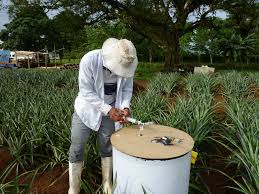Carbon Farming : Technique To Reduce Greenhouse Gas Emission

Some techniques within carbon farming can reduce greenhouse gas emissions.
- By adopting carbon-smart farming methods, we can simultaneously meet food demands and combat climate change.
- Carbon farming also known as carbon sequestration refers to a set of practices aimed at reducing greenhouse gas emissions from agriculture and land use.
- It aimed at storing carbon in the soil, crop roots, wood, and leaves.
Techniques in Carbon Farming:
- Rotational Grazing: This involves moving livestock between pastures to allow vegetation to recover, enhancing soil carbon storage.
- Agroforestry: Incorporating trees and shrubs into farming systems to sequester carbon in vegetation.
- Conservation Agriculture: Practices like zero tillage, crop rotation, and cover cropping to minimize soil disturbance and improve organic content.
- Integrated Nutrient Management: Using organic fertilizers and compost to promote soil fertility and reduce emissions.
- Livestock Management: Optimizing feed quality and managing animal waste to lower methane emissions.




